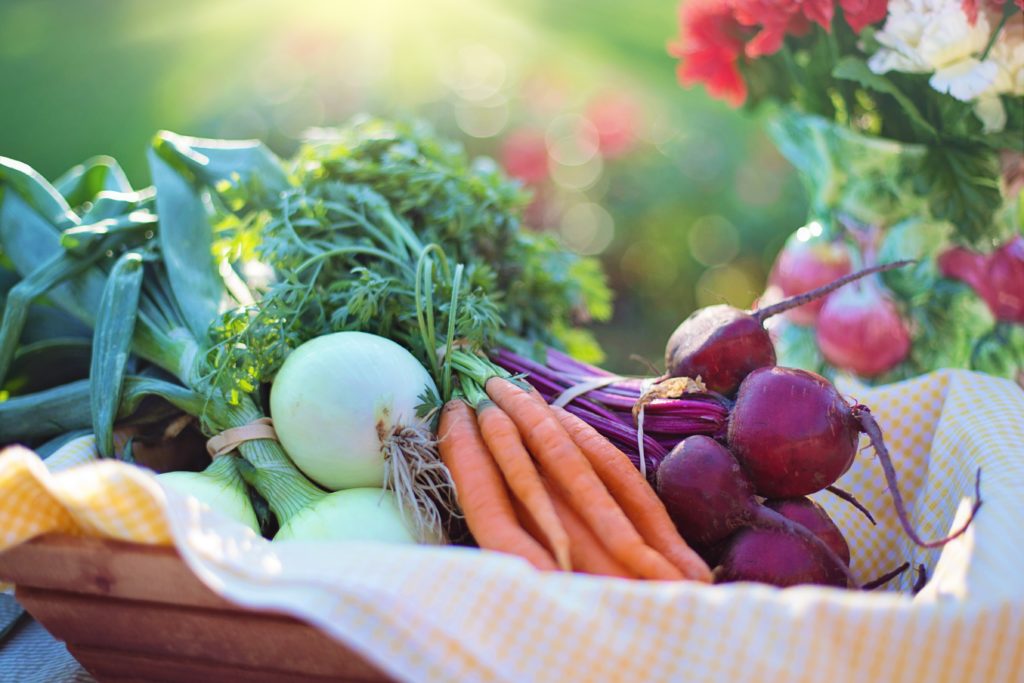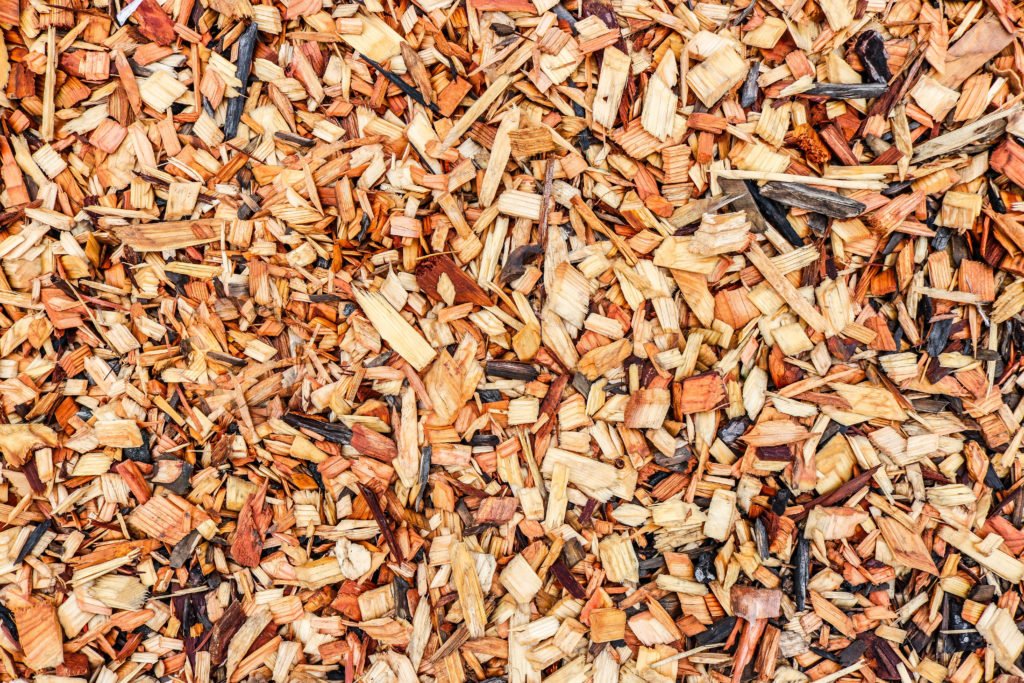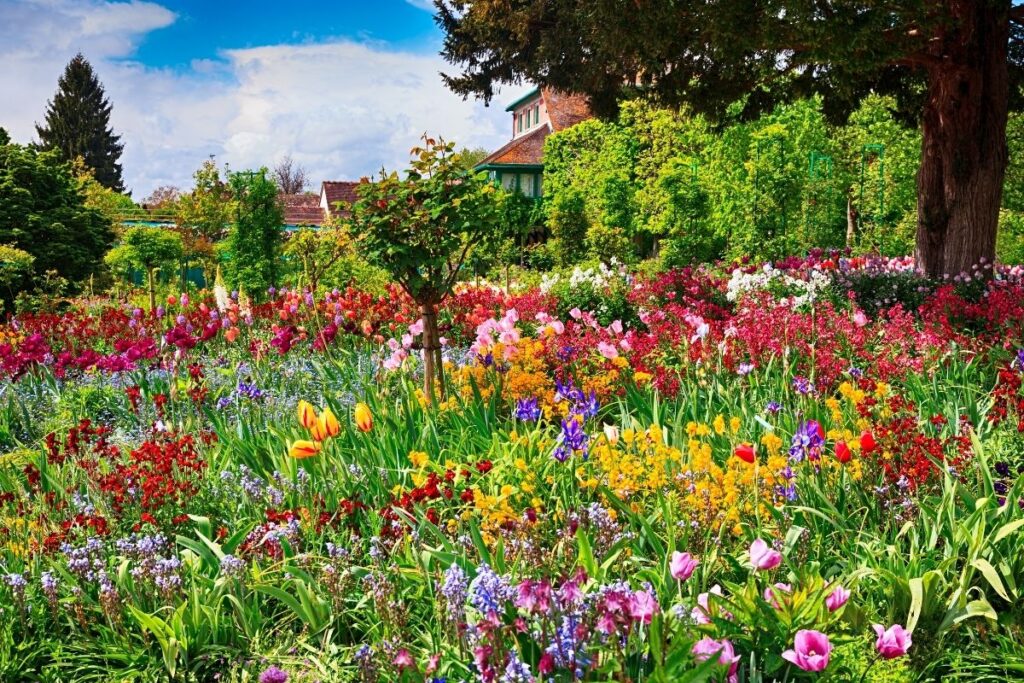Tomatoes are one of the most popular vegetables to grow in home gardens, and for good reason! They’re easy to care for, super versatile, and there’s nothing quite like the taste of a freshly picked tomato.
If you’re new to growing tomatoes, you may be wondering what the difference is between determinate and indeterminate varieties. Determinate tomatoes are bushier, produce fruit all at once, and are generally better suited for canning or making into sauces.
Indeterminate tomatoes, on the other hand, continue to grow and produce fruit throughout the season. In this post, we’ll focus on how to grow indeterminate tomatoes.
Why grow indeterminate tomatoes?
Indeterminate tomatoes are a great option for gardeners who want to enjoy fresh tomatoes all season long. These varieties of tomatoes continue to produce fruit until the first frost, meaning that you can enjoy fresh tomatoes from early summer right up until winter.
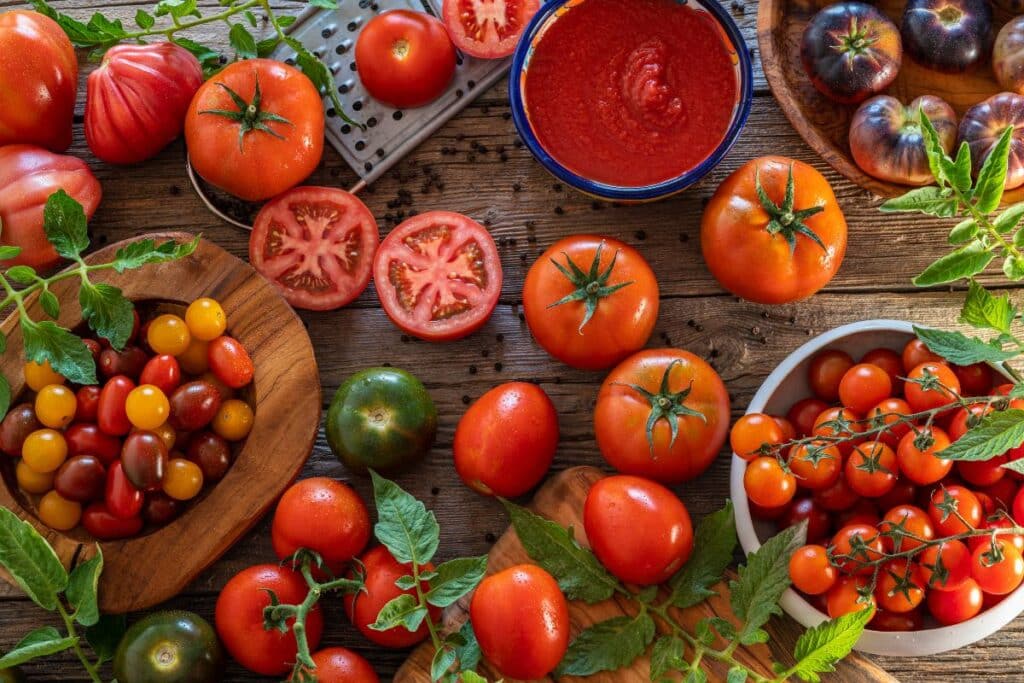
This means that you can enjoy fresh tomatoes for longer, and you’ll also have a greater chance of getting a bumper crop. For me in Southern California planting zone 10b, most years I grow indeterminate tomatoes all year long!
In addition, indeterminate tomatoes are typically more disease-resistant than their determinate counterparts, making them a good choice for anyone dealing with aphids, pests or other diseases in their garden.
Where to plant tomatoes
When choosing a spot to grow your indeterminate tomatoes, make sure to choose an area that gets plenty of sunlight. Tomatoes need full sun (at least six hours of sunlight per day) in order to produce fruit, so a sunny spot in your garden is ideal.
If you live in an area with hot summers, you may want to choose a spot that gets some afternoon shade in order to protect your plants from the scorching rays of the sun. You can also put up shade canopies or some umbrellas.
Can you grow indeterminate tomatoes in containers?
Yes, you can! This is how I grow all my tomatoes.
While most people plant indeterminate tomatoes in the ground, they can also be successfully grown in containers. Container gardening has become increasingly popular in recent years, as it allows people to grow their own plants even if they have limited space.
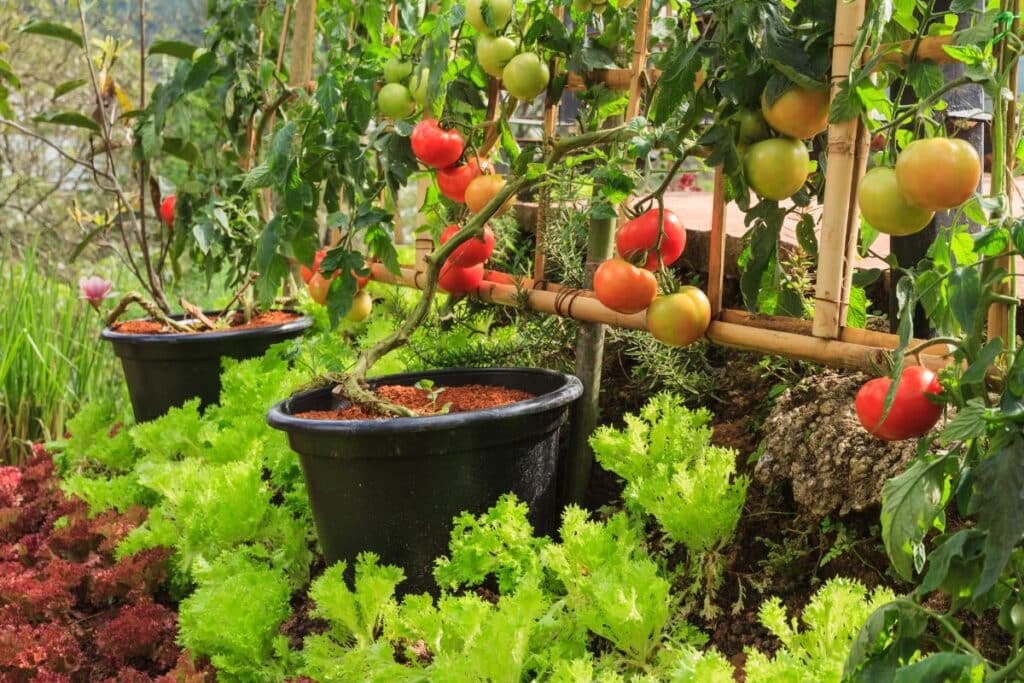
For me, I like container gardening because it is much easier to control the soil quality and limit spread of disease.
When choosing a container for your indeterminate tomatoes, look for one that is at least 18 inches wide and 12 inches tall. I use these 20 gallon grow bags. I’ve experimented with planting 2 tomato plants in a single bag and while it works, honestly just one per bag yields better results!
You will also need to provide support for the plant as it grows, using a tomato cage or trellis. Don’t fall for the green plastic cages – they will break on you as plastic gets brittle in the sun and weather. Even the old school round metal cages are a terrible design that end up toppling over.
The best support for big, juicy tomatoes or varieties that produce a lot of fruit are these metal square tomato cages. They are very sturdy and also conveniently fold flat for storage.
Which variety of indeterminate tomato is best?
My favorite indeterminate tomato variety is the Sweet 100. This variety produces A LOT of small, bite-sized tomatoes that are incredibly sweet and perfect for snacking on.
Other popular indeterminate tomato varieties include the Big Boy, Sweet Million, and Brandywine.
If you’re looking for a disease-resistant variety, Early Girl and Big Daddy are solid choices.
When to plant tomatoes
In most parts of the country, the best time to plant tomatoes is in late spring, after the last frost has passed.
If you live in an area with mild winters, you may be able to get away with planting your tomatoes in early winter.
Be sure to give your tomato plants plenty of space when planting. Tomato plants should be planted at least two feet apart, as they will need room to spread out as they grow. Overcrowding is a common cause for disease in tomatoes as well as leggy tomato plants.
Amend Your Soil
Tomatoes are heavy feeders, so it’s important to amend your soil before planting. To do this, add some compost or well-rotted manure to the planting area a few weeks before you plan to plant.
This will help ensure that your plants have all the nutrients they need to produce delicious, juicy fruits.
Tomatoes love slightly acidic soil (like banana, blueberries, raspberries and blackberries). If you have rabbits, guinea pigs or hamsters – don’t throw away the used shaved wood bedding! Use it to top dress your tomatoes and it will act as both a mulch and fertilizer while also deterring pests!
Stake & Prune Your Plants
As indeterminate tomato plants grow and produce fruit, they can get quite unruly. To keep your plants under control and prevent them from toppling over under the weight of their fruits, be sure to stake them up to help them to grow vertically.
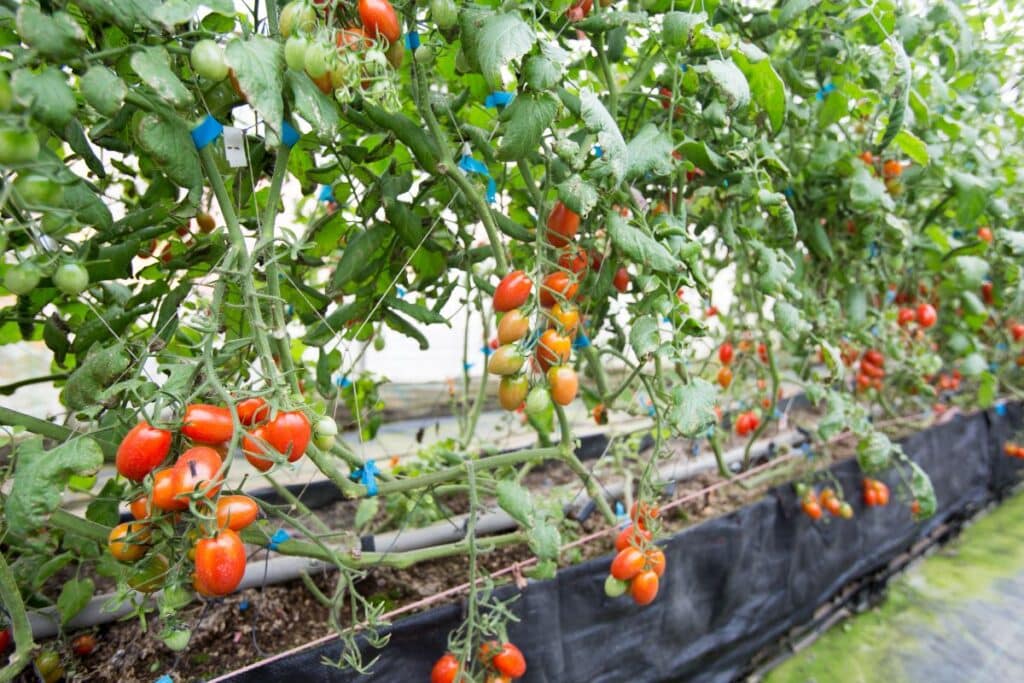
You can also prune off any side shoots that appear in order to direct the plant’s energy towards producing fruit instead of foliage.
How to care for indeterminate tomatoes
Once your tomato plants are in the ground or containers, you’ll need to water them regularly. Tomato plants should be watered deeply and evenly, about once a week.
If you live in an area with high summer temperatures, you may need to water your plants more frequently. Be sure to check the soil before watering, as overwatering can be just as detrimental to tomato plants as under watering.
In addition to watering, you’ll also need to fertilize your tomato plants on a regular basis. I like to use Dr. Earth Tomato and Vegetables fertilizer when growing tomatoes, as it helps to give them a steady supply of nutrients throughout the growing season and I can use it on generally all my vegetables.
It can be helpful to mulch your tomatoes to help retain moisture and prevent weeds. I like to use straw (not hay!) for my tomato plants, or wood shavings from the animal bedding mentioned above.
With a little bit of care and attention, you can successfully grow indeterminate tomatoes in your own home garden! Just remember to choose a sunny spot for planting, amend your soil before planting, and stake & prune your plants as needed throughout the growing season. With these tips in mind, you’ll be enjoying fresh tomatoes all summer long!

